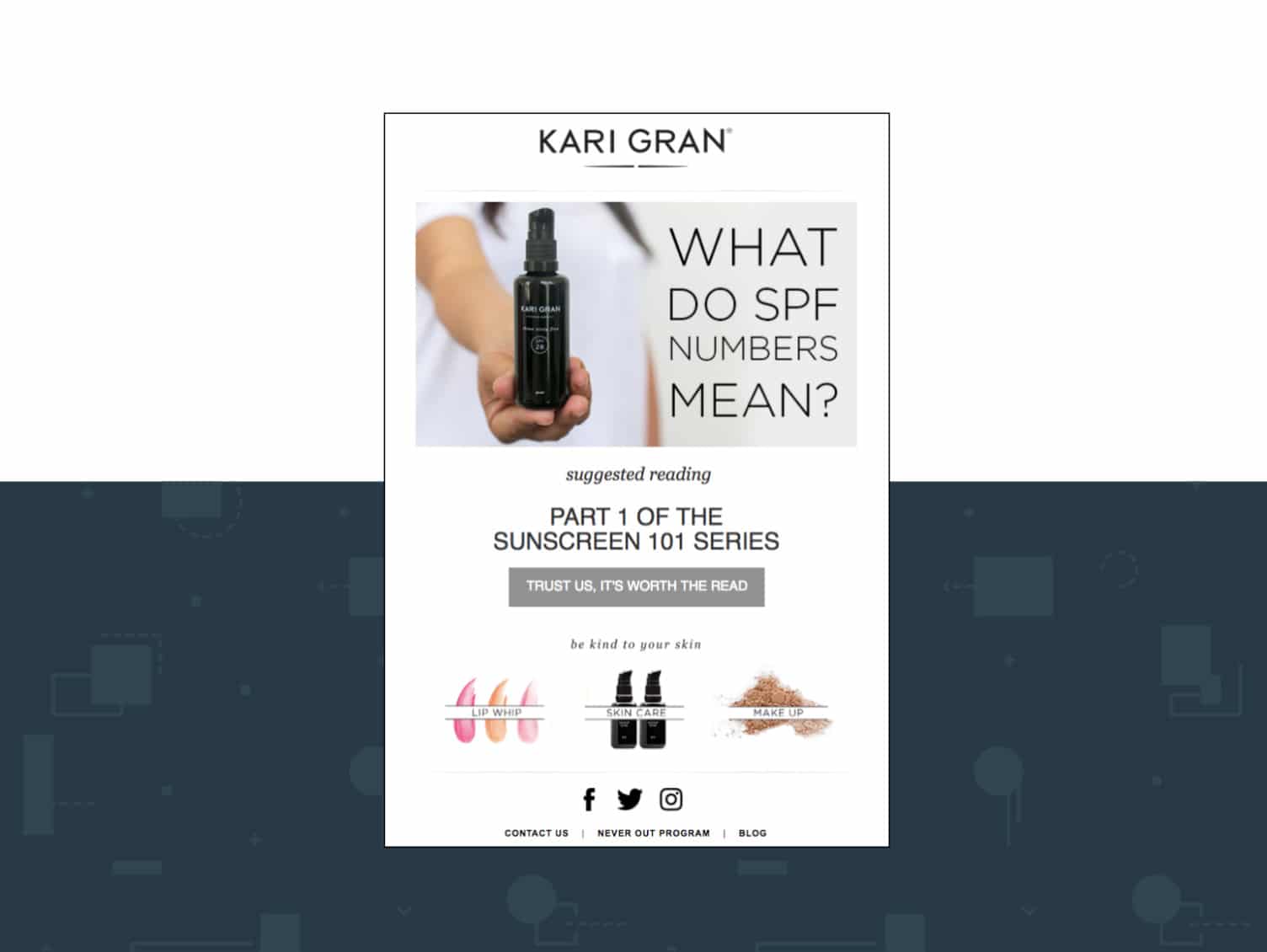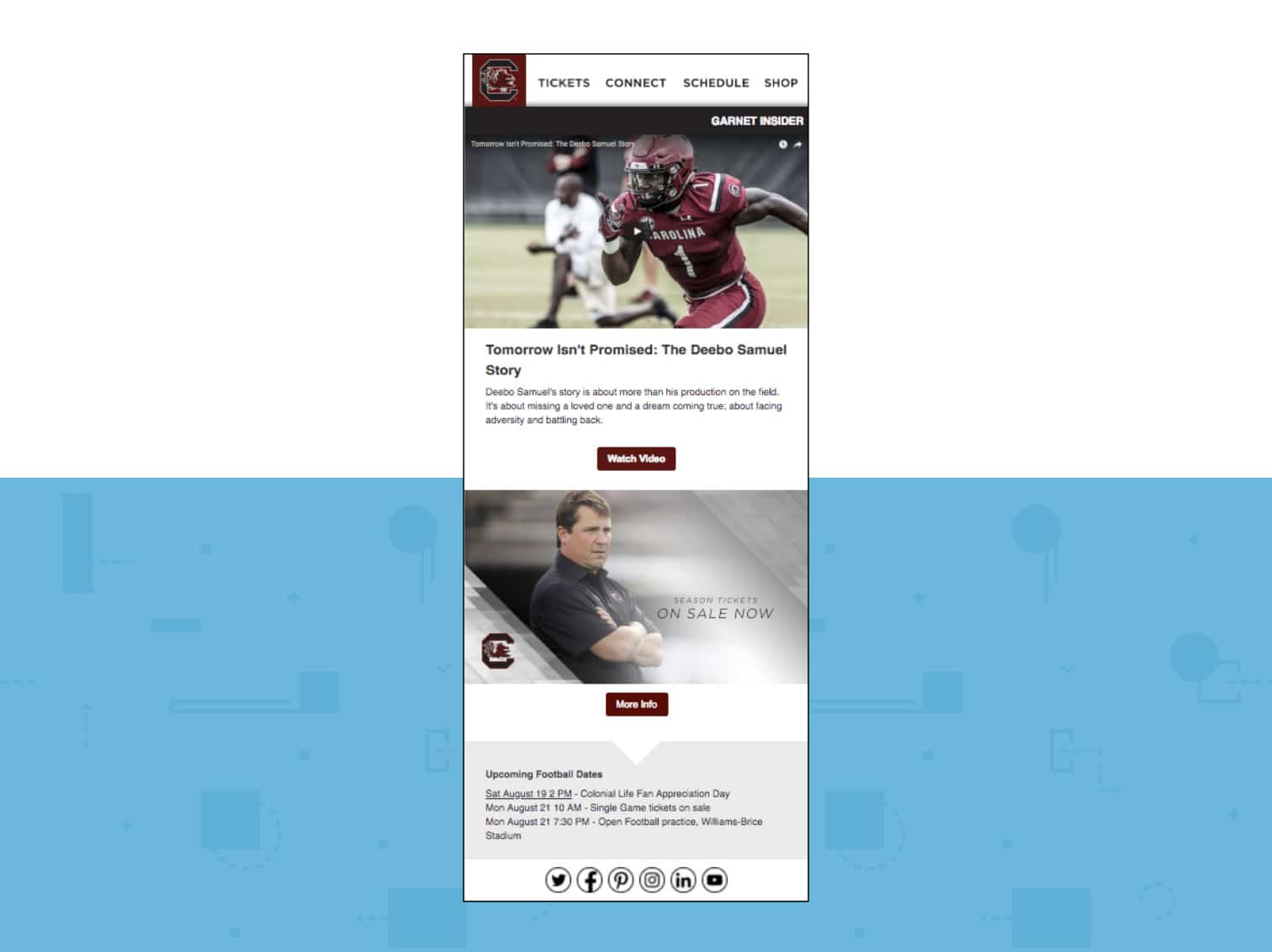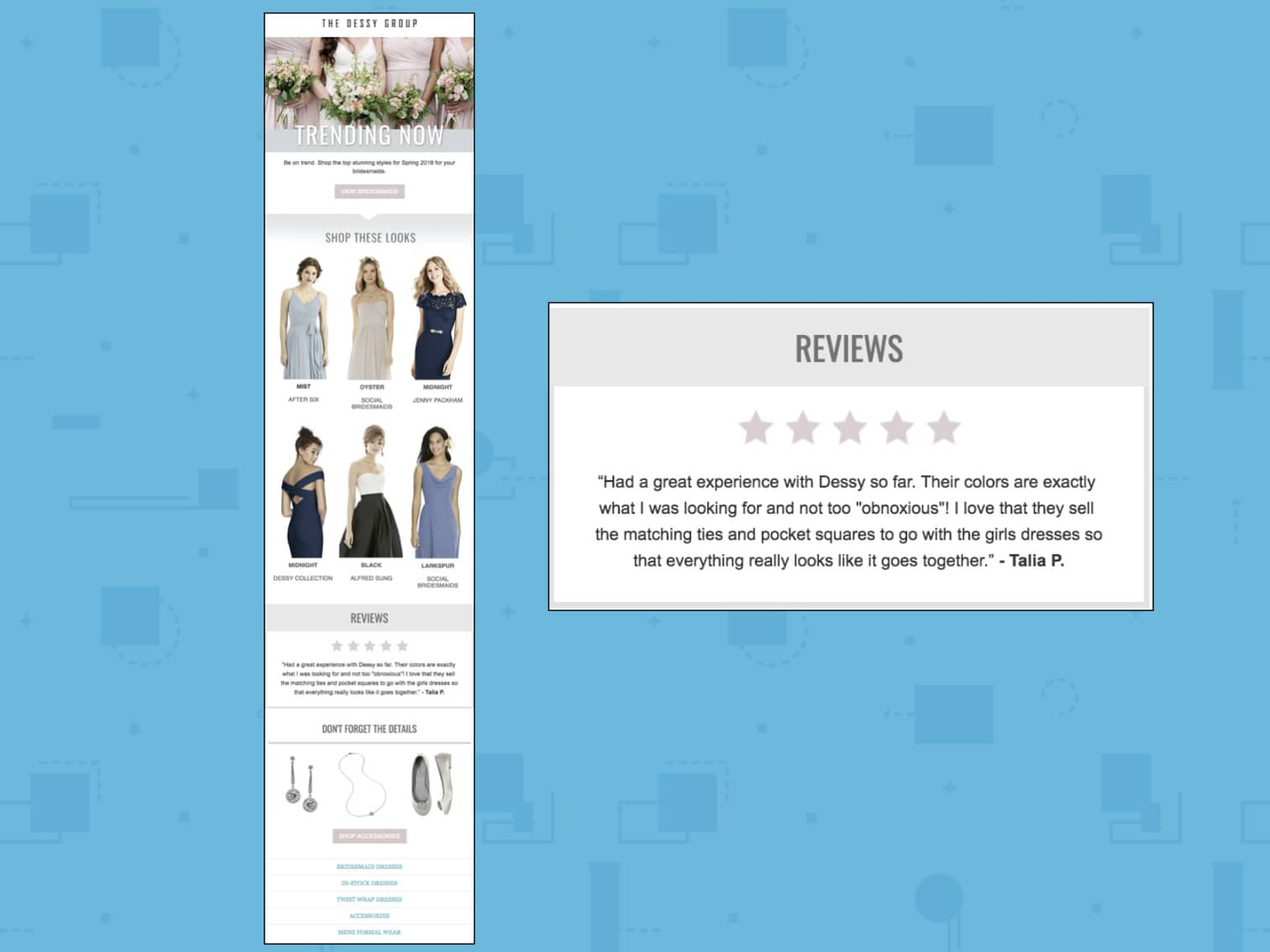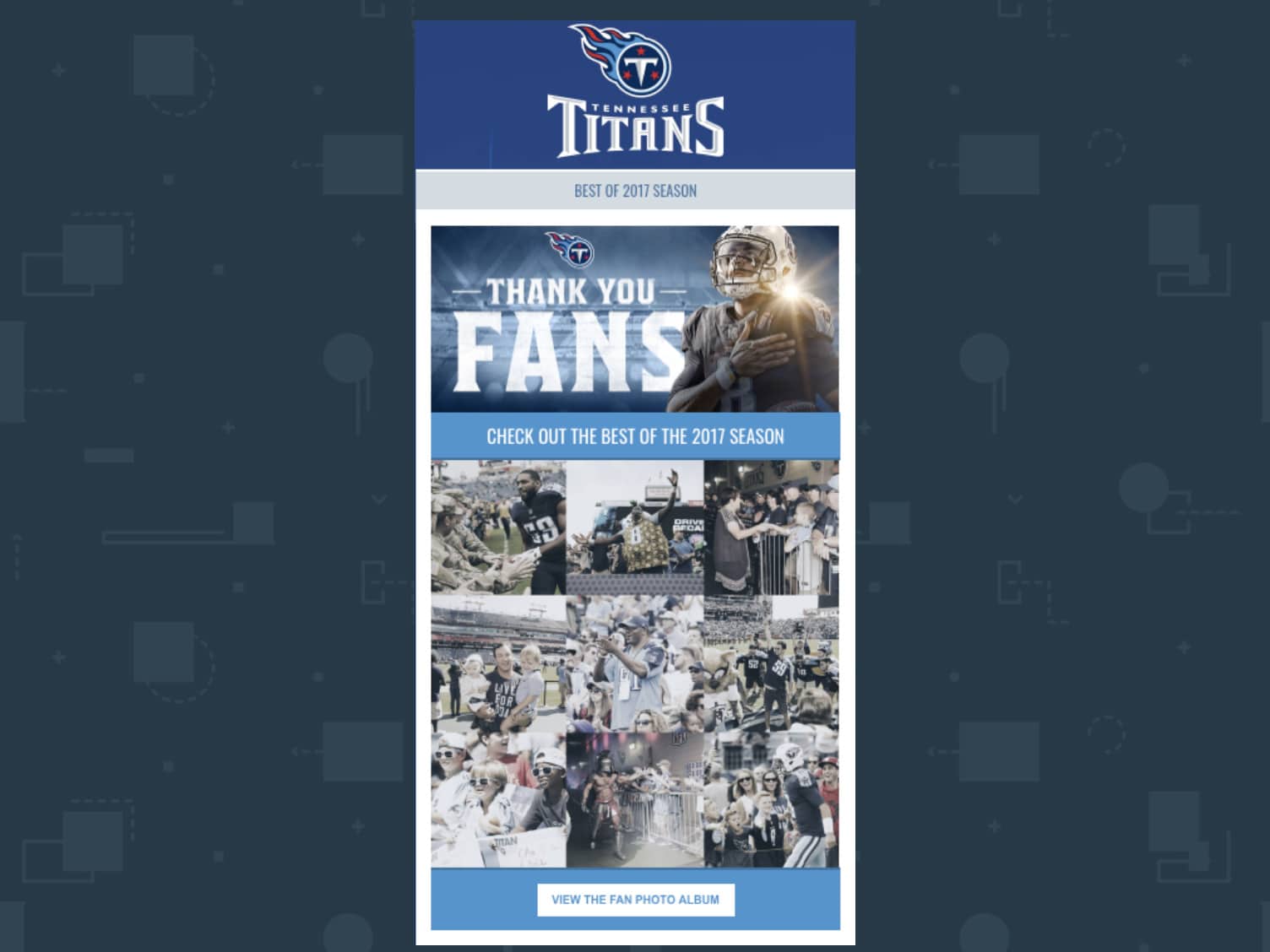How to drive conversions with content marketing
Content best practices to boost revenue and long-term results
First off, I get why content might not always be at the forefront of your marketing strategy. You know that your customers want value, but you still need to generate sales. It's the main goal and measure of success for marketers in the majority of industries we encounter, including restaurants, fitness, finance, professional sports, and more.
However, as an email specialist on the Professional Services Team at Emma, I have a lot of conversations with our customers about how to get better results in the inbox. And whenever I tell them content is the answer, I get pushback. Most often, it sounds like:
"I don’t have the time or resources to do that."
"I really need to focus on sales right now."
"We can focus on content during our slow period."
At the end of the day, the percentage of businesses trying to drive revenue for themselves hovers somewhere around 100%—so I understand the hesitation. But let's take a look at what a buyer's journey typically looks like.
The Buyer's Journey
1. Awareness. This is when the buyer realizes they have a problem. Prior to awareness, a customer may have a need, but they're not aware there's a solution.
2. Research. Once a customer is aware there's a solution, they'll perform research to educate themselves on the options.
3. Consideration. At this point, the customer starts comparing different products from different vendors to make sure they’re getting a high-quality product at a fair price.
4. Conversion. Finally, the customer makes their decision and moves forward with the transaction.
In today's saturated market, moving your prospective buyers down this path (and convincing them to choose you) isn't easy. So what can you do to drive conversions? How do you stand out from all the other businesses trying to sell? Moreover, how do you move past a one-time sales and cultivate long-term brand advocates?
The answer is content.
We'd all love to send an email promoting whatever it is we have to offer and have every subscriber immediately buy, but it doesn't work like that. Your audience needs nurturing before you can convince them to convert. And to nurture them effectively, you have to embrace content marketing.
So what is content marketing, exactly? According to Content Marketing Institute, it's "the technique of creating and distributing valuable content to attract an audience with the objective of driving a customer action."
Here's a look at how to do it right.
Setting your content marketing strategy
Before creating your first piece of valuable content, you first need to figure what you're trying to get people to do, who you want to do it, how you'll convince them, and what you want to achieve as a result. This can otherwise be broken down into:
THE ACTION: What action do you want your subscribers to take?
THE AUDIENCE: Who are you sending this campaign to?
THE BENEFIT: What's in it for your subscribers?
THE RESULTS: How will you measure success?
It's important that you remember to go beyond the hard sell to focus on the long-term goal of converting subscribers into brand advocates.
Getting started with content marketing
Once you've identified the above, here are a few great first steps to take when developing a content marketing discipline you can utilize in your email strategy and beyond.
1. Think evergreen
One of the biggest pain points I hear concerning content marketing is that producing content takes time. It's true, but that doesn't mean you can't still create content when working with limited time and resources. Instead, focus on producing content that's evergreen—aka, content that will remain valuable and relevant regardless of when someone consumes it. Evergreen content is about working with what you already have, and it allows you to scale much more effectively than focusing on super timely or trending topics.
This blog post from skincare brand Kari Gran will remain relevant as long as people continue to wear sunscreen.
2. Tell a brand story
No matter what product or service your brand is marketing, you have a story to tell. To illustrate how this can work within your email strategy, here's a look at a campaign from one of our customers, University of South Carolina Athletics Department (Go Gamecocks!).
In the email, they've put the spotlight on a video they created entitled, "Tomorrow Isn't Promised: It's Earned." The video is a documentary-style story about Deebo Samuel, a player who overcame his circumstances and became a star member of the South Carolina roster. By honing in on universal themes like facing adversity and chasing dreams, they evoke an emotional reaction from viewers.
Note how below the video, they've still included a link to purchase season tickets. They haven't forgotten about driving conversions, but they're making sure they create an emotional impact through effective storytelling before they ever make the ask.
3. Use testimonials and reviews
Positive social proof has been shown to be more persuasive than discounts. In fact, 92% of people will trust a recommendation from a peer in their circle over traditional advertising when it comes to making purchase decisions. If you have access to reviews or social proof from current customers, be sure to sprinkle that into your emails and let your biggest fans do the selling for you.
4. Leverage user-generated content
Speaking of your fans... user-generated content is a powerful way to leverage that audience to create content you can use in your own marketing. It works, too: User-generated content in email typically produces a 43% increase in clickthrough rates and a 2-3X increase in conversion rates. Find your biggest advocates, move beyond the business-to-customer relationship, and let your fans be a part of the story you're telling.
Wrapping it all up
The moral of the story here? Even if your brand's main goal is to drive revenue, that doesn't mean every email you send has to be, "Buy, buy buy!" Content marketing is an incredibly effective way to generate sales, and more importantly, it helps you develop a base of brand advocates that will actually have a higher lifetime value. So invest whatever time and resources you can into developing content to use in your email program—and if you're an Emma customer who needs some help getting there, just give my team a shout!
MOST RECENT ARTICLES
Want to engage your audience and grow your brand? Try Emma's robust easy-to-use product today.

















